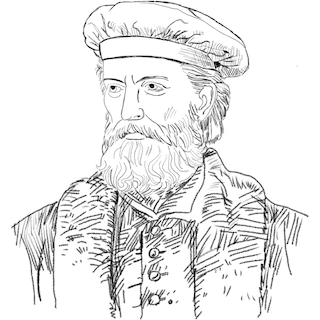On November 11 Russian troops withdrew from the right bank of the Dnipro River in a major military defeat for the Kremlin that led to scenes of jubilation in the port city of Kherson, the only Ukrainian regional capital Russia succeeded in occupying in almost nine months of bitter fighting. While there were few details of exactly how the Russian Armed Forces carried out their rapid pullback, the military retreat appeared to have been prepared well in advance of the official announcement of the withdrawal. President Vladimir Putin has not publicly commented on the retreat. His spokesperson Dmitry Peskov told reporters that Kherson was still Russian territory as a result of Moscow’s annexation of four regions of Ukraine in September. On November 14 President Volodymyr Zelensky made an unannounced visit to Kherson, then he called a liberated city. He said that Ukraine is ready for peace, but peace for all of its territories. "We respect international law and the sovereignty of every state, and now we are talking about the sovereignty of our state. That is why we are fighting against Russian aggression," Zelensky said. "We are not interested in the territory of other countries. We are only interested in the de-occupation of our country and our territories." Western media earlier reported that the West may be trying to push Kyiv to negotiate with Moscow. According to the Wall Street Journal, senior U.S. and EU officials are divided on the need to push Ukraine into peace talks, however, they believe that an opportunity for negotiations may appear in the coming weeks or months. This event was presented by all international media as “the beginning of peace”. On the same day, November 14 the United Nations General Assembly called for Russia to be held accountable for its conduct in Ukraine, voting to approve a resolution recognizing that Russia must be responsible for making reparations to the country. The resolution was supported by 94 of the assembly's 193 members. It recommends that member states, in cooperation with Ukraine, create an international register to record evidence and claims against Russia. General Assembly resolutions are nonbinding, but they carry political weight. Russia's U.N. Ambassador Vassily Nebenzia told the General Assembly before the vote that the provisions of the resolution are "legally null and void" as he urged countries to vote against it. Fourteen countries voted against the resolution, including Russia, China, and Iran, while 73 abstained, including Brazil, India, and South Africa. Not all member states voted. These votes saw more division than the one where the annexation of the regions of Donetsk, Kherson, Luhansk, and Zaporizhzhia was condemned. On that occasion 143 Member States voted in favor, with five voting against, and 35 abstentions. The countries who voted against were Belarus, the Democratic People's Republic of Korea, Nicaragua, Russia, and Syria. A majority of those countries abstaining were African nations, alongside China and India. With these premises on November 15 started the G20 summit in Bali, where part of the discussion concerned the Ukraine crisis. Ukrainian President Volodymyr Zelenskyy was invited to speak and presented a plan for peace in ten points which included energy security, the release of prisoners, the withdrawal of Russian troops, and cessation of hostilities. Russian President Vladimir Putin did not attend the event, sending his foreign minister Sergei Lavrov instead. Zelenskyy mocked Putin's absence in his speech, repeatedly addressing the leaders as the "G19." Russian Foreign Minister Sergey Lavrov told reporters following his attendance that Russia is not refusing to negotiate with Ukraine, it is the Kyiv regime who is doing so. "We have repeatedly confirmed through our president that we do not refuse to negotiate. If anyone is refusing to negotiate, it is Ukraine. The longer the Kyiv regime continues to refuse, the harder it will be to reach an agreement," he clarified. In the night between November 15 and 16 tensions further escalated: more than 100 missiles hit Ukraine, with Kyiv being the major target. Moreover, two explosions by Russian-made missiles have reached the small village of Przewodów in Poland, right at the border with Ukraine, making two dead. Poland, a member of NATO, raised its army's readiness level after an urgent meeting of the government committee for national security and defense affairs. While the Russian Defense Ministry has called reports of Russian missiles landing in Poland a “deliberate provocation,” denying that there were strikes made on targets near the Ukrainian-Polish state border, Hungarian and Latvian Prime Ministers also called emergency government meetings. US President Joe Biden and leaders from the G7 and NATO are in an emergency roundtable in Bali. The meeting includes Biden and leaders from Canada, the European Union, Spain, Italy, France, Germany, Netherlands, and Japan, the officials said.
READ MORE
